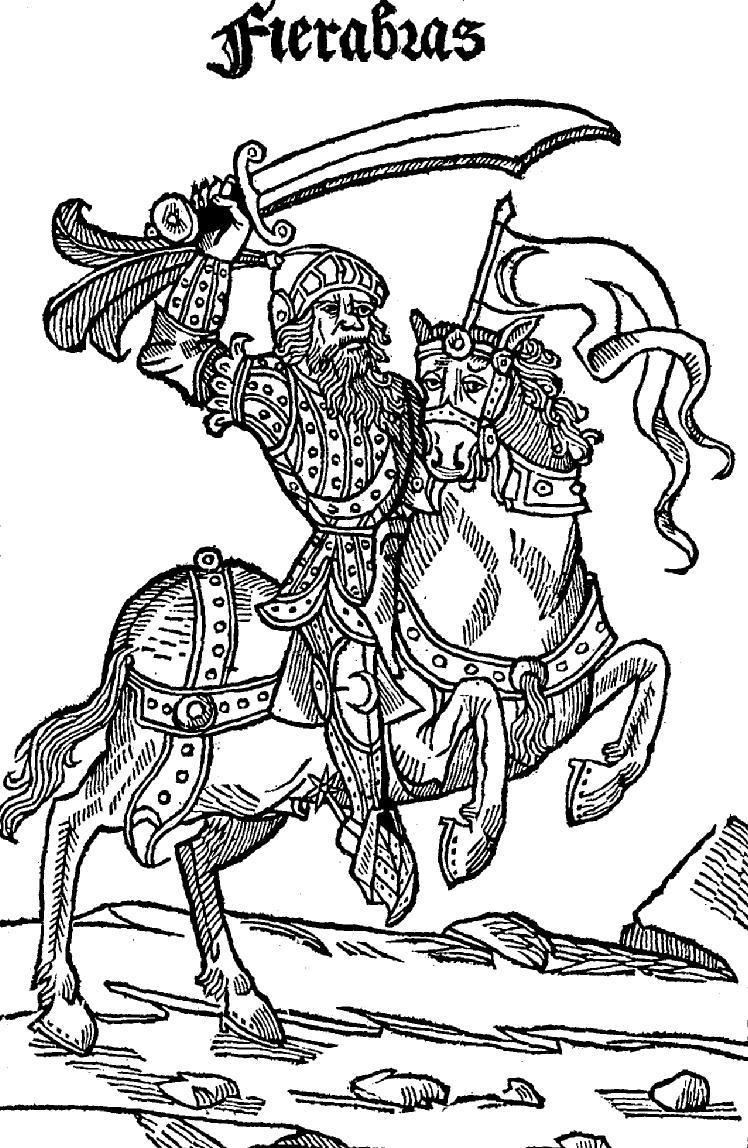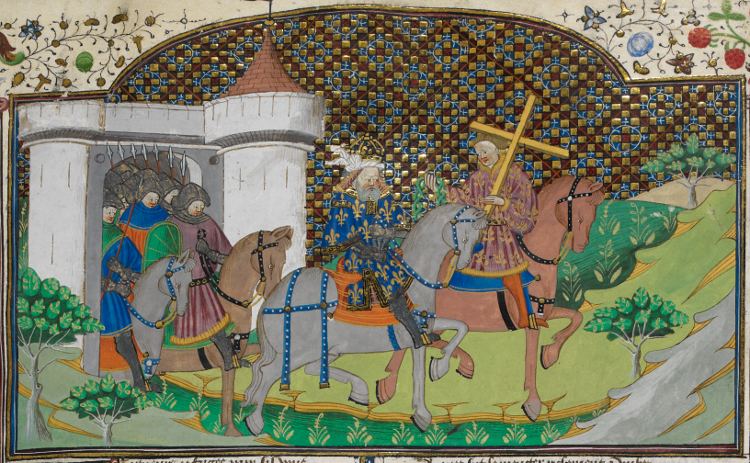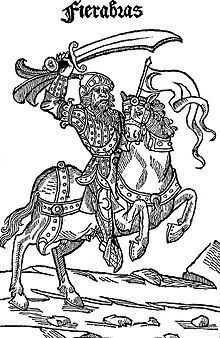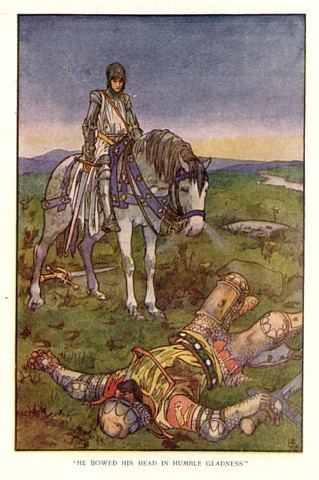 | ||
Similar Maritornes, Renaud de Montauban, Huon of Bordeaux, Ganelon, Sancho Panza | ||
Fierabras (from French: fier à bras, "brave/formidable arm") or Ferumbras is a fictional Saracen knight (sometimes of gigantic stature) appearing in several chansons de geste and other material relating to the Matter of France. He is the son of Balan, king of Spain, and is frequently shown in conflict with Roland and the Twelve Peers, especially Oliver, whose prowess he almost rivals. Fierabras eventually converts to Christianity and fights for Charlemagne.
Contents

Texts and adaptations

The oldest extant text of the story of Fierabras is a 12th-century (c. 1170) Old French chanson de geste of roughly 6,200 alexandrines in assonanced laisses. The story is as follows: the Saracen king Balan and his 15-foot-tall (4.6 m) son Fierabras return to Spain after sacking the church of Saint Peter's in Rome and taking the relics of the passion. Charlemagne invades Spain to recover the relics and sends his knight Olivier de Vienne, Roland's companion, to battle Fierabras.

Once defeated, the giant decides to convert to Christianity and joins Charlemagne's army, but Olivier and several other knights are captured. Floripas, Fierabras' sister, falls in love with one of Charlemagne's knights, Gui de Bourgogne. After a series of adventures, Charlemagne kills king Balan, divides Spain between Fierabras and Gui de Bourgogne (who marries Floripas), and returns to Saint Denis with the holy relics.

The poem also survives in an Occitan version dating from the 13th century (roughly 5,000 alexandrines; the first 600 verses do not appear in the Old French version). The Occitan and the Old French version may derive from a common lost source. This version in turn inspired an Italian version (Cantare di Fierabraccia e Ulivieri) in the second half of the 14th century.

Two English versions were made: Sir Ferumbras (late 14th or early 15th century) and Firumbras (fragmentary). A 15th-century English work, Sowdon of Babylon, combined the story with another work (the Destruction de Rome).
The story was put into prose three times in the 14th and 15th centuries:

In Spain the story can be found in the Historia del emperador Carlomagno y de los doce pares de Francia by Nicolás of Piemonte first edited in 1521. This is a Castilian translation—or better, an adaptation—of Bagnyon's La Conqueste du grand roy Charlemagne. Miguel de Cervantes refers to Fierabras in his Don Quixote (see below).
There also exist other versions of the legend, including one in Early Modern Irish (Stair Fortibrais).
The 17th-century playwright Calderón de la Barca used elements of the story (the love affair of Floripas and Gui) for his play La Puente de Mantibile.
In 1823, Franz Schubert wrote the opera Fierrabras, based on certain tales surrounding the knight's conversion.
The balm of Fierabras
According to a chanson from 1170, Fierabras and Balan conquered Rome and stole two barrels containing the balm used for the corpse of Jesus. This miraculous balm would heal whoever drank it.
In Chapter X of the first volume of Miguel de Cervantes' Don Quixote de la Mancha, after one of his numerous beatings, Don Quixote mentions to Sancho Panza that he knows the recipe of the balm. In Chapter XVII, Don Quixote instructs Sancho that the ingredients are oil, wine, salt and rosemary. The knight boils them and blesses them with eighty Pater Nosters, and as many Ave Marias, Salves and Credos. Upon drinking it, Don Quixote vomits and sweats and feels healed after sleeping. For Sancho it has also a laxative effect, rendering him near death.
